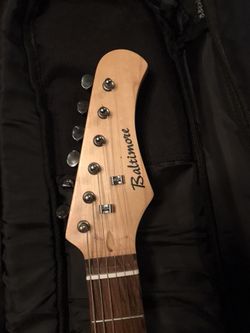

Looking down on the tuning pegs on the guitar head, the strings are wrapped so the string heads towards the fret board on the inside of the tuning peg.

There is a big difference in righty-tighty.

As you are tuning stretch the strings to check for slippage and seating. Also a good idea to string all 6 strings before doing the final tuning and then e start tightening across all 6( don't tune 1 at a time, slowly start bringing each one closer to tune until all 6 in tune). On the bass strings you need about 3 windings (2-2.5 winds on heavier guage) The upper strings (gbe) you should shoot for 4 to 6 windings. The excess wire is then pinched (locked) between the first two windings. To lock, the first wind goes above the excess wire, additional winds go below the excess wire. Hard to explain, youtube videos on it though. You really should "lock" the strings during restringing. Take some time to play with what "feels normal" and turn the pegs in the direction that feels natural when you replace your strings in later steps.Ī couple of things. The latter does tend to be the norm, but the truth is that there is no correct answer just make sure it feels comfortable and intuitive to you. While some guitarists will stick to a "righty-tighty, lefty-loosy" attitude when setting up their guitar, others will turn the peg away from the body of the guitar (to the left) in order to pull the string tight and turn the peg towards the body of the guitar (to the right) to loosen the strings. Without the crank, continue to rotate the tuning pegs by hand until the stings can be removed by hand. Simply place the cap over the tuning peg and grasp the handle, as you "crank" the tool around (hence the nickname), the handle will rotate allowing a quick and smooth rotation of the tuning peg. It will make the process much quicker and keep you from turning the peg one half turn at a time. While a tuning crank is not required, most locations where you purchase stings will have these cranks and they usually only cost $1 or $2. Always loosen strings completely to remove them. As you progress, try out different materials and gauges to hone in on the styles you enjoy.īegin loosening the strings by turning the tuning pegs.Ĭaution: do not cut strings that under tension as the recoil is unpredictable and may cause damage to people and/or equipment. If you are looking for a heavy metal & rock sound, look for strings made of steel or nickel nylon for high and "bright" sounding tones and brass or copper strings if you're looking for a versatile "middle of the road." However, most strings will only make an impact on high end performance gear and recording studios - the cherry on top, if you will - so don't be afraid to stick to your budget when it comes to strings, especially when starting out. There are several factors that influence the sound a guitar makes, and the strings play part in that equation as well. If you're eyelets are not color coded then be extra careful not to mix the strings in this case, it would be recommended not to open the individual string until you are ready to attach it to the guitar.
Lotus guitar identification code#
While is it most common to use colored eyelets to easily recognize the thickness of each string, some manufacturers will not color code the eyelets but label each strings package respectively. "String 6" is the thickest string and is furthest from the ground shown being touched by both the index and middle fingers.ĭifferent manufacturers will label their strings in different ways. While holding the guitar, "String 1" is the thinnest string and is closest to the ground shown being touched by the index finger.


 0 kommentar(er)
0 kommentar(er)
